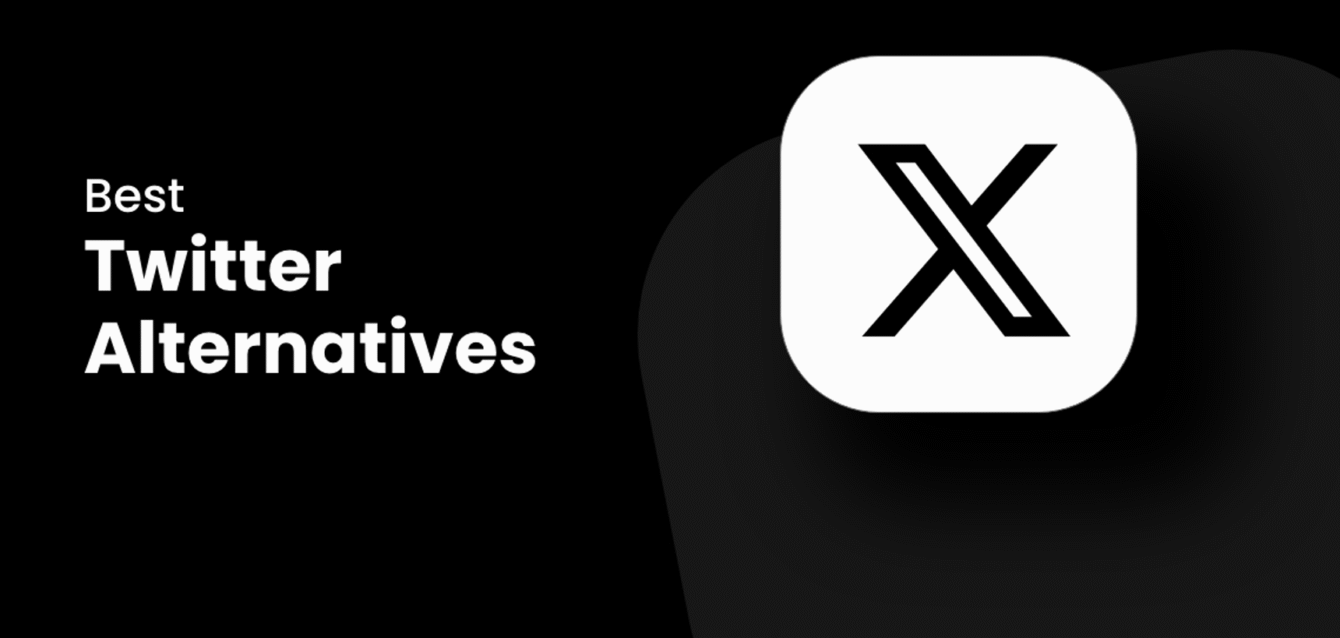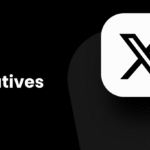Twitter Alternatives 2026
The social media landscape entering 2026 bears little resemblance to the Twitter-dominated ecosystem of just three years ago. As X (formerly Twitter) continues hemorrhaging users and revenue through late 2025, a diverse array of platforms has emerged to capture displaced communities, creators, and brands seeking healthier digital environments. The numbers tell a stark story: X lost 33 million monthly active users between 2023 and 2025, while revenue collapsed from $4.4 billion in 2022 to $2.5 billion in 2024, with projections suggesting further decline to $2.99 billion in 2025 and $2.84 billion in 2026.
This comprehensive guide examines the complete spectrum of Twitter alternatives as we close 2025 and enter 2026, providing data-driven analysis of platform trajectories, user demographics, business models, and strategic considerations. Whether you’re an individual user exhausted by platform instability, a brand reassessing social strategy, or a creator diversifying audience reach, this resource delivers the depth needed to navigate an increasingly fragmented but opportunity-rich social landscape.
The Accelerating X Exodus: Understanding the Migration Drivers
The departure from X accelerated dramatically throughout 2025, with Edison Research documenting sharp declines in U.S. usage. Multiple factors converged to drive this exodus, each reinforcing user frustration and eroding platform value.
Content moderation changes implemented since Elon Musk’s October 2022 acquisition fundamentally altered platform safety. The decision to allow blocked users to view your posts, announced in late 2024, represented a critical breaking point for users prioritizing personal safety and harassment prevention. Similarweb data shows UK active daily users plummeted from 8 million in 2024 to 5.6 million by late 2025, with over one-third of that decline occurring after controversial policy changes.
Algorithmic manipulation reached unprecedented levels as X prioritized paid subscribers and engagement-bait content over chronological feeds and quality discourse. Users report spending 24 minutes daily on X in 2025, down from 38 minutes before Musk’s acquisition. This engagement collapse reflects diminished content quality as the algorithm surfaces increasingly polarizing, misleading, or low-quality material designed purely to maximize controversial engagement.
The verification system’s corruption destroyed trust signals that previously helped users identify authoritative sources. By allowing anyone to purchase blue checkmarks without identity verification, X eliminated the meaningful distinction between verified accounts and impersonators. This change particularly impacted journalists, researchers, and public figures whose professional credibility depended on verification.
Advertiser flight accelerated throughout 2024-2025 as major brands abandoned a platform they viewed as incompatible with brand safety requirements. The Guardian’s November 2024 decision to cease posting on X, citing it as a “toxic media platform,” epitomized institutional rejection of the platform’s direction. This advertiser exodus contributed directly to X’s revenue collapse, forcing the company to explore increasingly desperate monetization schemes.
Technical instability plagued X through 2025 as reduced engineering staff struggled to maintain infrastructure. Service disruptions, broken features, and degraded performance became routine experiences, eroding user confidence in platform reliability. The EU reported a 5% decline in active users during the first half of 2024 alone, while U.S. active users dropped approximately 20% over 16 months through late 2024.
Platform Landscape Analysis: The Complete Alternatives Ecosystem
Threads: Meta’s Momentum Play
Threads has emerged as the clear momentum leader among Twitter alternatives, reaching 320 million monthly active users by January 2025 and climbing to 400 million by late 2025. Industry analysts project Threads will surpass X’s 600 million users sometime in 2026, based on current growth trajectories adding approximately 50 million users every four months.
Meta’s strategic advantages position Threads for continued growth. Seamless Instagram integration allows automatic follower porting and cross-platform content sharing, dramatically reducing switching costs that typically impede social platform migration. Users can authenticate with existing Instagram credentials, eliminating signup friction that hobbles smaller competitors.
The platform’s development velocity accelerated through 2025 as Meta invested heavily in feature parity with X. Direct messaging functionality launched mid-2025, addressing a critical gap that limited professional use cases. Enhanced search capabilities, improved discovery algorithms, and expanding API access for third-party tools demonstrate Meta’s commitment to matching and exceeding X’s functionality.
Demographic data reveals Threads’ broad appeal, with 57% male audience composition and strong concentration in the 25-34 age bracket (29% of users). The platform benefits from Meta’s existing ecosystem effects, with 70% of Threads users also active on Facebook and 51% on Instagram. This cross-platform presence enables brands to extend existing Meta strategies across Threads with minimal additional infrastructure.
However, Threads faces legitimate concerns around Meta’s data practices and moderation philosophy. The platform remains unavailable in the European Union due to data protection regulation compliance issues, limiting international growth potential. Privacy experts have raised red flags about data collection practices that mirror Facebook and Instagram’s surveillance-based business model.
The algorithmic feed, while potentially driving engagement, contradicts user preferences for chronological timelines that characterized early Twitter’s appeal. Meta’s historical challenges with content moderation at scale raise questions about Threads’ ability to maintain healthier discourse as user numbers climb toward billion-user territory.
Bluesky: Decentralized Twitter Done Right
Bluesky represents the most technologically ambitious Twitter alternative, reaching 30 million users by late 2025 while growing at approximately six users per second during peak periods. Founded by Twitter co-founder Jack Dorsey, Bluesky leverages the AT Protocol (Authenticated Transfer Protocol) to enable true decentralization while maintaining Twitter’s familiar interface and user experience.
The platform’s core innovation lies in algorithmic choice. Rather than imposing a single algorithmic feed or chronological timeline, Bluesky enables users to select from multiple algorithms, create custom algorithms, and share algorithmic approaches across the community. This “choose your own algorithm” philosophy addresses the fundamental tension between algorithmic engagement optimization and user autonomy.
Starter packs provide unique onboarding experiences, allowing users to subscribe to curated collections of accounts based on interests, communities, or topics. This feature significantly reduces the empty timeline problem that plagues new social network users, enabling rapid community integration without lengthy manual account discovery processes.
The decentralized architecture built on AT Protocol theoretically prevents single-entity control of the type that enabled Musk’s X transformation. Users can theoretically migrate data and social graphs to alternative AT Protocol implementations, though in practice no competing AT Protocol platforms have achieved significant scale by late 2025.
Bluesky’s culture closely mirrors early Twitter’s vibe, attracting users nostalgic for pre-algorithm, pre-monetization Twitter. The platform maintains ad-free operation through late 2025, though questions persist about long-term business model sustainability. Dorsey’s departure from Bluesky’s board in 2024 raised concerns about governance and mission drift as the platform scales.
Technical limitations remained apparent through 2025. Missing features including polls, analytics, and advanced search functionality limit professional and business use cases. The platform’s moderation approach, while less heavy-handed than Meta’s industrial-scale systems, struggles to balance free expression and community safety as userbase expands.
Mastodon: The Veteran Decentralized Network
Mastodon stands as the longest-established Twitter alternative, predating the 2022 exodus by years with its 2016 launch. The platform reached approximately 9 million total users by late 2025, with around 880,000 active users engaging regularly. While growth has plateaued compared to Threads and Bluesky’s explosive expansion, Mastodon maintains a dedicated community valuing privacy, decentralization, and non-commercial operation.
Built on the ActivityPub protocol, Mastodon operates as part of the broader Fediverse, a federation of interconnected social platforms. Users select an “instance” (independent server) aligned with their interests, values, or community, then can interact with users on other instances across the Fediverse. This architecture ensures no single entity controls the entire network, making Mastodon effectively “billionaire-proof.”
The instance model provides granular community control. Each instance maintains its own moderation policies, content rules, and cultural norms. Users dissatisfied with their instance’s governance can migrate to alternatives while preserving their social connections and post history. This structure enables highly specialized communities optimized for specific use cases, from tech-focused instances to arts communities to professional networks.
Mastodon’s commitment to open-source, non-profit operation appeals to users prioritizing ethical technology. The platform accepts no venture capital, operates on crowdfunding and donations, and explicitly rejects advertising and algorithmic manipulation. Features often requested on commercial platforms (editing posts, chronological feeds, content warnings) have been Mastodon defaults for years.
However, Mastodon’s complexity presents genuine barriers to mainstream adoption. Instance selection overwhelms new users unfamiliar with decentralized concepts. The learning curve for understanding federation, instance-specific rules, and cross-instance interaction deters less technically inclined users. Marketing as “the Linux of social media” accurately captures both the platform’s principled architecture and mainstream accessibility challenges.
The smaller active userbase limits network effects that drive social platform value. Users seeking broad reach, breaking news coverage, or celebrity engagement find Mastodon’s more intimate, niche-focused communities inadequate replacements for Twitter’s mass-market appeal. Professional users including journalists, marketers, and public figures struggle to justify Mastodon investment when target audiences remain concentrated on larger platforms.
LinkedIn: The Unexpected Beneficiary
LinkedIn emerged as an unexpected major beneficiary of X’s decline, absorbing professional discourse previously conducted on Twitter. The platform’s professional focus and relatively stable governance attracted business users, thought leaders, and industry professionals seeking less chaotic environments for professional networking and knowledge sharing.
LinkedIn’s transformation from resume repository to dynamic content platform accelerated through 2024-2025. Algorithm changes prioritizing native content over external links encouraged users to publish articles and commentary directly on LinkedIn rather than linking to external blogs or publications. Enhanced creator tools, including newsletters, video features, and improved analytics, positioned LinkedIn as a viable platform for thought leadership and professional brand building.
The platform’s 900+ million user base provides unmatched professional networking reach, particularly for B2B marketers, recruiters, and corporate communications. The professional context ensures more measured, less inflammatory discourse than Twitter’s anything-goes culture, appealing to users exhausted by performative outrage and bad-faith arguments.
However, LinkedIn’s algorithmic manipulation and engagement-bait problems mirror and sometimes exceed Twitter’s issues. The feed increasingly surfaces motivational platitudes, humble-brags, and rage-bait content optimized for engagement rather than professional utility. The platform’s corporate veneer can feel stifling for creative professionals and casual users accustomed to Twitter’s informal communication style.
Reddit: Community-Driven Conversations
Reddit serves as a Twitter alternative for users prioritizing deep, focused discussions within interest-based communities. With 97.2 million daily active users engaging across hundreds of thousands of topic-specific subreddits, Reddit offers unprecedented depth and specialization unavailable on broadcast-oriented platforms.
The subreddit structure enables granular community formation around virtually any topic imaginable. Users can participate in multiple specialized communities simultaneously, from mainstream interests to incredibly niche topics. Community-specific moderation allows each subreddit to establish and enforce its own rules, creating diverse governance models unavailable on centralized platforms.
Reddit’s upvote/downvote system and threaded comments enable more substantive discussions than Twitter’s format permits. Long-form replies, detailed explanations, and nuanced debates flourish in Reddit’s structure. The platform’s culture rewards high-quality contributions with karma and visibility, creating incentives for thoughtful participation beyond mere attention-seeking.
However, Reddit’s culture presents barriers to Twitter refugees. Each subreddit maintains unique rules, posting expectations, and community norms that new users must learn. The platform’s reputation for hostile gatekeeping and pile-on moderation deters casual users seeking welcoming environments. Reddit’s format fundamentally differs from Twitter’s broadcast model, requiring different content strategies and engagement approaches.
Discord: Private Community Infrastructure
Discord represents a fundamentally different model than public social networks, providing infrastructure for private, invite-only communities. Originally built for gaming communities, Discord expanded dramatically to serve creators, businesses, educational groups, and social circles seeking more intimate, controlled communication environments.
Discord servers enable tiered access control, channel-specific permissions, and granular moderation tools unavailable on public platforms. Communities can implement verified membership, paywalled access, or invite-only structures ensuring higher quality participants and reducing moderation burden. Voice channels, screen sharing, and real-time collaboration features support use cases beyond simple text discussion.
The platform’s 150+ million monthly active users span demographics and use cases from teenage gaming groups to professional communities to educational institutions. Discord’s flexibility allows each community to configure their server precisely for their needs, from casual hangout spaces to highly structured professional networks.
Discord’s private nature fundamentally limits it as a Twitter replacement for users seeking broad reach, public discourse, or discovery of new voices. The platform operates on an invite-only model antithetical to Twitter’s public broadcasting function. Content exists within walled communities rather than the public sphere, eliminating the “public square” dynamic that defined Twitter’s appeal.
Emerging Platforms and Niche Alternatives
Several smaller platforms carved out specific niches through 2025, serving particular user segments with differentiated value propositions.
Hive Social blends Twitter’s microblogging with Instagram’s visual focus, attracting younger users seeking creative expression and visual storytelling. The platform reached over 1 million users but remains significantly smaller than major alternatives.
Spoutible positions itself as Twitter-like but with stronger privacy protections and user controls, appealing to safety-conscious users. Limited adoption restricts network effects.
CounterSocial explicitly markets itself as a “troll-free” platform with aggressive moderation against misinformation and harassment. The premium subscription model ($5/month) limits scale but ensures revenue sustainability.
Substack Notes extends Substack’s newsletter platform with Twitter-like microblogging functionality, enabling newsletter creators to build discussion communities around their content.
Truth Social, owned by President Donald Trump, serves primarily right-leaning users and achieved modest scale through political alignment rather than technical innovation.
Strategic Platform Selection: Choosing the Right Alternative
Selecting appropriate Twitter alternatives requires analyzing specific use cases, target audiences, and strategic objectives. No single platform perfectly replicates Twitter’s comprehensive functionality and broad reach. Most users and organizations benefit from multi-platform strategies rather than seeking one-to-one Twitter replacement.
For Individual Users
Priority: Privacy and Ethics Mastodon offers the strongest privacy protections and ethical governance through its decentralized, non-profit structure. The learning curve and smaller userbase trade off against corporate surveillance and advertising-based business models.
Priority: Familiar Experience and Broad Reach Threads provides the most Twitter-like experience with the largest and fastest-growing userbase. Integration with Instagram ecosystem offers convenience despite Meta’s data collection practices.
Priority: Algorithmic Control and Customization Bluesky enables unprecedented control over content algorithms and feed customization. The smaller userbase and missing features trade off against unique algorithmic choice and decentralized architecture.
Priority: Professional Networking LinkedIn dominates professional networking and business discourse. The platform’s corporate culture and engagement-bait problems trade off against unmatched B2B reach and career opportunities.
Priority: Deep Topic Discussions Reddit enables focused, substantive discussions within specialized communities. The steep learning curve and insular culture trade off against depth and specialization unavailable on broadcast platforms.
For Brands and Businesses
Priority: Maximum Reach and Engagement Threads’ explosive growth and Meta ecosystem integration make it the highest-priority platform for brands seeking mass reach. The algorithmic feed and Instagram overlap enable efficient scaling of existing Meta strategies.
Priority: Professional and B2B Audiences LinkedIn offers unmatched access to decision-makers, professionals, and business audiences. The platform’s professional context ensures higher-quality leads despite lower absolute engagement rates than consumer-focused platforms.
Priority: Community Building Discord enables controlled, private communities with higher engagement and stronger relationships than public platforms. The private nature limits discovery and broad awareness building.
Priority: Early Adopter and Tech Audiences Bluesky and Mastodon disproportionately attract tech-savvy, early adopter demographics. Brands targeting these audiences benefit from participation despite smaller absolute userbases.
For Content Creators and Influencers
Priority: Audience Growth Threads’ rapid expansion and Instagram integration provide fastest audience growth potential. The algorithmic feed can limit organic reach but enables viral content distribution.
Priority: Audience Ownership and Control Substack Notes and Discord enable direct audience relationships and revenue generation without platform dependency. Smaller reach trades off against sustainability and reduced platform risk.
Priority: Niche Topic Authority Reddit and specialized Mastodon instances enable deep engagement within specific niches. Position as subject matter experts and thought leaders benefits from Reddit’s knowledge-sharing culture.
Priority: Cross-Platform Presence Multi-platform strategies using tools like Buffer or Hootsuite enable simultaneous presence across alternatives. Time investment increases but reduces dependence on any single platform.
Migration Best Practices and Tactical Considerations
Successfully transitioning from X to alternatives requires strategic planning rather than reactive abandonment. Organizations and creators benefit from phased approaches that maintain existing audiences while building presence on alternatives.
Announce Migration Plans Communicate platform diversification to existing X followers before reducing X activity. Share alternative platform handles and encourage audience to follow across platforms. Frame migration as expanding presence rather than abandoning X entirely.
Leverage Cross-Promotion Use X to build alternative platform audiences during transition periods. Link to Threads, Bluesky, or Mastodon profiles in X bio. Share alternative platform handles in X posts. Drive followers to alternatives before reducing X presence.
Maintain Consistent Branding Use consistent usernames, profile images, and branding across platforms where possible. Brand recognition facilitates audience discovery on new platforms. Consistency reduces confusion during platform transitions.
Adapt Content for Platform Cultures Each alternative maintains unique culture, norms, and content preferences. LinkedIn requires professional framing. Mastodon values content warnings and accessibility. Threads inherits Instagram’s visual focus. Adapt content strategies rather than copy-pasting identical posts across platforms.
Utilize Automation Tools Selectively Cross-posting tools enable efficient multi-platform management but risk appearing spammy or inauthentic. Platforms increasingly penalize identical cross-posted content. Use automation for scheduling and analytics rather than pure content duplication.
Track Performance Metrics Monitor engagement rates, follower growth, and traffic referrals across alternatives. Data-driven decisions about platform investment prevent resource waste on low-performing channels. Adjust strategies based on actual performance rather than platform hype.
The 2026 Social Media Landscape: Predictions and Implications
As we enter 2026, several trends will reshape the social media competitive landscape and determine which Twitter alternatives achieve lasting success versus fading into also-ran status.
Threads’ Projected Dominance Industry analysts project Threads will surpass X in monthly active users during 2026, based on current growth trajectories. Meta’s resource advantages, Instagram integration, and aggressive feature development position Threads as the default Twitter replacement for mainstream users. However, privacy concerns, algorithmic manipulation, and Meta’s moderation challenges may limit appeal among users seeking genuine alternatives to corporate-controlled platforms.
Decentralized Platforms’ Maturation Bluesky and Mastodon will continue serving users prioritizing decentralization and non-corporate governance. Neither platform will achieve mainstream dominance but both will establish sustainable niches. Improved onboarding experiences, missing feature implementations, and growing developer ecosystems will enhance competitiveness. The fundamental question remains whether decentralized architectures can scale to serve hundreds of millions of users while maintaining their principled governance.
Platform Fragmentation’s Permanence The unified Twitter-dominated real-time social landscape will not return. Users, brands, and creators must accept permanent fragmentation across multiple platforms serving different audiences and use cases. Multi-platform strategies become standard practice rather than optional diversification. Content creators and marketers require expanded skill sets for navigating multiple platform algorithms, cultures, and norms.
X’s Potential Stabilization or Collapse X faces two possible 2026 trajectories. The platform could stabilize around a smaller but more ideologically aligned userbase, similar to Truth Social’s niche positioning. Alternatively, accelerating advertiser flight and user departures could trigger cascading collapse and potential bankruptcy. Musk’s political involvement and controversial platform decisions make predicting X’s future particularly challenging.
Regulatory Intervention’s Impact Increased scrutiny from regulators in the EU, US, and other jurisdictions will shape platform development. Data protection requirements, content moderation mandates, and interoperability regulations may force architectural changes. Platforms’ regulatory compliance strategies will determine international expansion potential and feature development roadmaps.
FAQ: Twitter Alternatives 2026
Which Twitter alternative has the most users? Threads leads all Twitter alternatives with 400 million monthly active users as of late 2025, more than double Bluesky’s 30 million and significantly exceeding Mastodon’s 9 million total users. However, X still maintains approximately 600 million users despite ongoing declines, making it the largest Twitter-like platform overall.
Can I automatically cross-post to multiple Twitter alternatives? Yes, several tools enable cross-posting including Buffer, Hootsuite, and specialized services like Openvibe which integrates Bluesky, Mastodon, Nostr, and Threads accounts. However, identical cross-posting risks appearing inauthentic and may trigger algorithmic penalties on some platforms. Adapt content for each platform’s culture and norms rather than pure copy-pasting.
Do Twitter alternatives have the same monetization opportunities? Monetization varies significantly across alternatives. Threads has begun testing creator monetization but lacks mature programs. Bluesky currently offers no direct monetization. Mastodon’s non-profit model excludes platform-based monetization. LinkedIn provides robust professional opportunities but differs from social media monetization. Content creators should diversify revenue sources beyond platform-specific programs.
Are Twitter alternatives safe from billionaire takeovers? Mastodon’s decentralized, non-profit structure makes traditional acquisitions impossible. Bluesky’s AT Protocol theoretically enables data portability preventing lock-in, though practical implementation remains untested at scale. Threads, owned by Meta, already operates under corporate control. No platform provides absolute protection against governance changes, but decentralized alternatives offer greater resilience.
How long do Twitter alternatives take to gain traction? Audience building timelines vary dramatically. Threads’ Instagram integration enables rapid follower conversion, potentially building audiences within weeks. Mastodon and Bluesky require more gradual, organic growth over months. Reddit necessitates community participation and reputation building before promotional activity. Plan 6-12 month timelines for establishing meaningful presence on new platforms.
Should I delete my X/Twitter account? Account deletion is a personal decision based on individual circumstances. Many users maintain dormant X accounts to protect username/handle ownership while focusing activity on alternatives. Others delete accounts entirely to make symbolic statements or eliminate security risks. Consider gradually reducing X activity while building alternative presence before making irreversible deletion decisions.
Which alternative is best for breaking news? Threads currently dominates breaking news coverage among alternatives, benefiting from large userbase and algorithmic amplification. X retains advantages for political and tech industry breaking news despite user exodus. Reddit’s subreddit structure enables topic-specific news tracking. No alternative perfectly replicates Twitter’s historical breaking news dominance.
Can small businesses succeed on Twitter alternatives? Yes, but strategies differ across platforms. Threads benefits businesses with visual products and existing Instagram presence. LinkedIn serves B2B companies and professional services. Discord enables subscription or membership community models. Reddit requires authentic participation in relevant subreddits before promotional activity. Success requires platform-appropriate strategies rather than transplanting Twitter approaches.
Conclusion: Navigating the Post-Twitter Landscape
The collapse of Twitter’s hegemony marks a watershed moment in social media history, ending nearly two decades of centralized platform dominance and ushering in an era of fragmentation, specialization, and user empowerment. As we close 2025 and enter 2026, no single Twitter alternative will achieve the universal dominance Twitter once enjoyed. Instead, users navigate an ecosystem of platforms serving different needs, audiences, and use cases.
This fragmentation presents both challenges and opportunities. Users must invest time across multiple platforms to maintain comprehensive reach. Brands require more sophisticated multi-platform strategies. Content creators face expanded complexity managing diverse audiences. However, competition drives innovation, user experience improvements, and more ethical governance than possible under monopolistic conditions.
The alternatives explored in this guide offer genuine improvements over X’s current dysfunctional state. Threads provides the scale and features for mainstream adoption. Bluesky delivers on decentralization promises. Mastodon proves non-profit, community-governed social networks work. LinkedIn, Reddit, and Discord serve specialized use cases better than Twitter ever did.
Success in 2026’s social landscape requires strategic thinking, platform-appropriate content strategies, and acceptance that no single platform will dominate real-time social conversation again. Those who adapt to fragmentation, diversify platform presence, and meet audiences where they congregate will thrive. Those seeking a one-to-one Twitter replacement will face continued frustration as the unified public square fragments into specialized communities.
The Twitter era has ended. The question is not whether to migrate but which alternatives best serve your specific needs, audiences, and objectives. By understanding each platform’s strengths, limitations, and cultural dynamics, you can build sustainable social media presence independent of any single platform’s fate.





